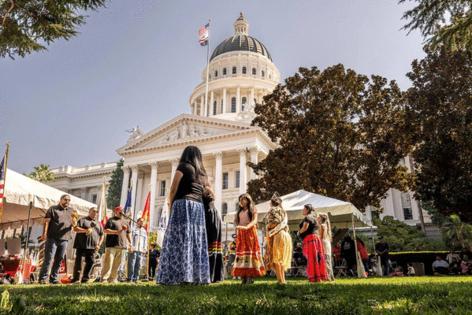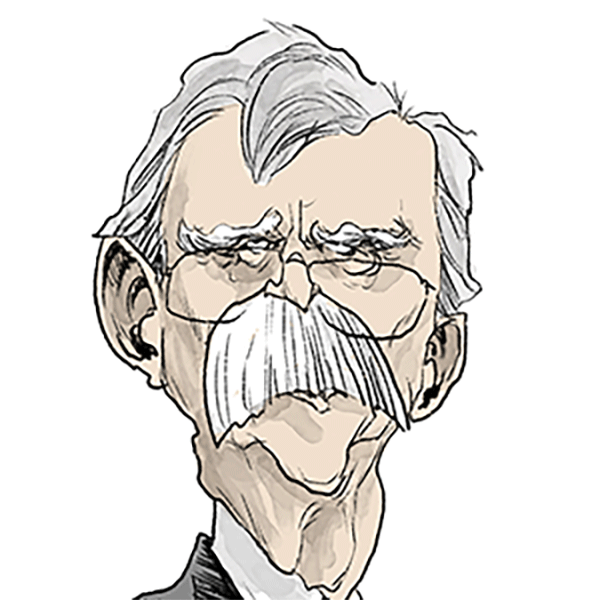Sacramento is having its first Native American Heritage month parade. Here's when, where
Published in News & Features
Native Americans will take center stage in a parade running through Capitol Mall for the first time in Sacramento’s history on Saturday.
In honor of Native American Heritage month, the California Legislative Native American Caucus has organized the celebration, which begins at 10 a.m., to highlight the cultural diversity, achievements and visibility of California tribes and Indigenous peoples nationwide.
Saturday’s festivities will highlight more than 80 tribal nations, Native groups and other allies to Indian Country, said Assemblyman James Ramos, D-San Bernardino. The parade will come down straight down the west Capitol steps, he added.
It’s a day that will be incredibly meaningful for people like Dustin Murray, the tribal administrator for Shingle Springs. His Miwok ancestors were banned from practicing their cultural traditions, he said. Growing up, his community was discouraged from embracing their identity publicly due to negative stigma the tribe faced, Murray said. Countless times he saw his elders and relatives from previous generations confronted in public.
“People used to say all sorts of nasty things about the tribe, especially when they were put in the spotlight,” Murray said. “We just kept our opinions to ourselves, because if you tried to advocate or stand up for it, you’d be in trouble.”
Fast forward to today, where instead of hiding their cultural practices on the Rancheria, the pride of the Shingle Springs will be out for Sacramento and the Capitol to see. Saturday won’t just be a parade, but a day his ancestors fought for, he said. It will be a day of reclaiming what was taken away from them. To be who they are as tribal people, without any fear of retribution.
“(This is) something that mine and every other Tribal person’s ancestors were unable to do for a very long time,” Murray said. “I hope that who we are and the work we continue to do is who and what they prayed for.”
Spotlighting Native issues
Parade floats will highlight specific aspects of various Native cultures, said Ramos. For example, Shingle Springs’ float will showcase its close ties to the Sacramento Valley and its waterways.
Tribes from across California will perform cultural dances, including the parade’s Southern California tribes, who will be led by inter tribal bird singers, Ramos, and Wayne Nelson, who is from the Pala Band of Mission Indians and is a member of the California Native American Heritage Commission.
Saturday’s festivities will bring several topics impacting tribal communities to the forefront, said Ramos. It will be a call for the state to acknowledge the atrocities inflicted on Native people, dating back to the California genocide, Spanish colonization and issues today, like the Missing and Murdered Indigenous People crisis.
“We’re exposing that, for the state of California, to see and to be able to work together and move forward from this painful past, but also to build on the resiliency of our ancestors,” said Ramos, who is Serrano/Cahuilla.
California has the largest Native population out of any state in the country. More than 700,000 people who identify as Native American or Alaska Native live in the state.
Embracing culture
Tribal nations have faced significant cultural barriers for decades, Murray said. For Native people, gaining basic rights has been a long fight. Tribal communities were forbidden from practicing their religious beliefs in public until 1978, when the American Indian Freedom of Religion Act passed. And it wasn’t until 1924 that Native people were granted the right to vote with the Indian Citizenship Act.
Native people have also overcome generations of Indian termination policy, which was a series of laws that dismantled tribal sovereignty and attempted to assimilate Indigenous peoples. These laws were enacted throughout the 1940s and 1960s. Tribes today are still reclaiming their identity and autonomy as independent nations, living through the aftermath of these policies.
Wilton Rancheria, whose headquarters are in Elk Grove, was targeted by Indian Termination policy under the California Rancheria Act and lost its federal recognition in the late 1950s. The tribe gained it back in 2009. Wilton Rancheria will be one of the many tribes featured in Saturday’s festivities.
The parade will give Native people the chance to represent themselves how they want to be, Murray said. After generations of attempted eradication, government assimilation and erasure, this parade will give power back to tribes to embrace who they are.
“The visibility this parade affords us doesn’t just ask to focus on our traditional aspects of being a people, but our lives in the contemporary too,” Murray said. “There is no theme, we are the theme.”
____
©2024 The Sacramento Bee. Visit at sacbee.com. Distributed by Tribune Content Agency, LLC.







Comments